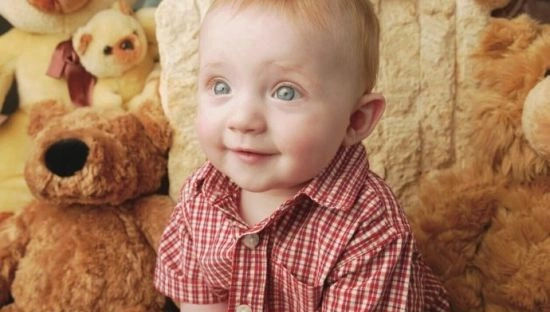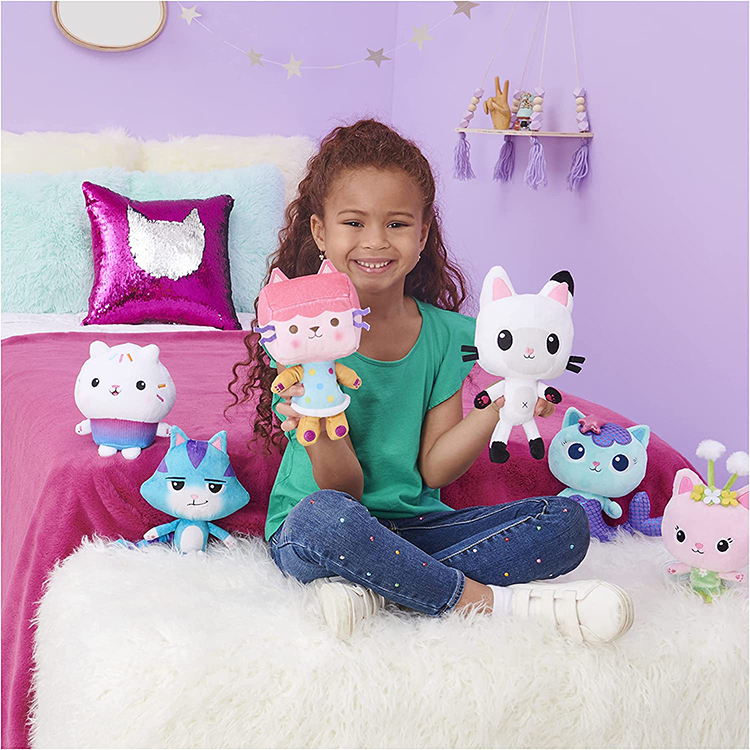The sweetest baby toy--plush toy
How Plush Toys Accompany Babies
At six months: Be sure to keep plush toys clean because no matter what materials they are made from, babies like to touch and taste them.
12-month-old: You need to buy two identical plush toys for your baby. At this age, babies won't lay their toys aside for even one second. They need to hug their plush toys from time to time, and bring them to bed for comfort.
18-month-old: Babies will imitate different kinds of animal sounds so as to talk with their plush animal toys. Duo to this, they much prefer plush toys with sound effect.
2-year-old: Taking Didi the dog for a walk, feeding Teddy Bear, babies are always busy role-playing with apparently, their plush toys. Their outgrown clothes can just give to their li'l plush toys.
3-year-old: Babies start showing their unique creativity and imagination with plush toys. Their teddy bear, toy duck, and other plush toys are not merely companions to them, but a dinosaur, a duck with large wings on the moon, the protagonists in their fantasy world.
How to choose a toy
Style:
Ages 0-2:
Pick cartoonish, visualized plush toys with salient characteristics and bright colors for babies at this age, like toy dogs, rabbits with big head and eyes. That's what they want.
Ages: 3-6:
It's best to get some realistic, impressive, and characterized toys, so that toddlers are able to recognize toys easily and enrich their knowledge.
Appearance:
Be aware of plush toys' appearance, make sure they have: plump head, moderate hardness, no crooked nose, symmetrical face, well-proportioned limbs.
Fabric and seam checking:
Hold the toy, rub with and against the grain of its plush (which should be recoverable). The toy shouldn't lose hair, show bare skin, and be worm-eaten, mildewy, and have chromatic aberration.
Generally, the standard in seaming toy includes even seam, no loose thread and exposure thread end.

At six months: Be sure to keep plush toys clean because no matter what materials they are made from, babies like to touch and taste them.
12-month-old: You need to buy two identical plush toys for your baby. At this age, babies won't lay their toys aside for even one second. They need to hug their plush toys from time to time, and bring them to bed for comfort.
18-month-old: Babies will imitate different kinds of animal sounds so as to talk with their plush animal toys. Duo to this, they much prefer plush toys with sound effect.
2-year-old: Taking Didi the dog for a walk, feeding Teddy Bear, babies are always busy role-playing with apparently, their plush toys. Their outgrown clothes can just give to their li'l plush toys.
3-year-old: Babies start showing their unique creativity and imagination with plush toys. Their teddy bear, toy duck, and other plush toys are not merely companions to them, but a dinosaur, a duck with large wings on the moon, the protagonists in their fantasy world.
How to choose a toy
Style:
Ages 0-2:
Pick cartoonish, visualized plush toys with salient characteristics and bright colors for babies at this age, like toy dogs, rabbits with big head and eyes. That's what they want.
Ages: 3-6:
It's best to get some realistic, impressive, and characterized toys, so that toddlers are able to recognize toys easily and enrich their knowledge.
Appearance:
Be aware of plush toys' appearance, make sure they have: plump head, moderate hardness, no crooked nose, symmetrical face, well-proportioned limbs.
Fabric and seam checking:
Hold the toy, rub with and against the grain of its plush (which should be recoverable). The toy shouldn't lose hair, show bare skin, and be worm-eaten, mildewy, and have chromatic aberration.
Generally, the standard in seaming toy includes even seam, no loose thread and exposure thread end.




